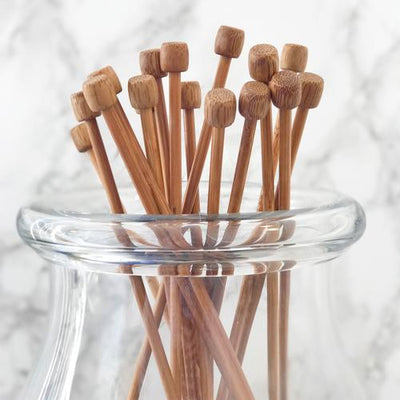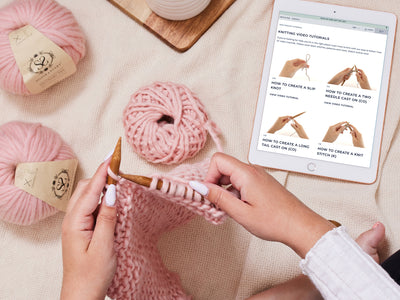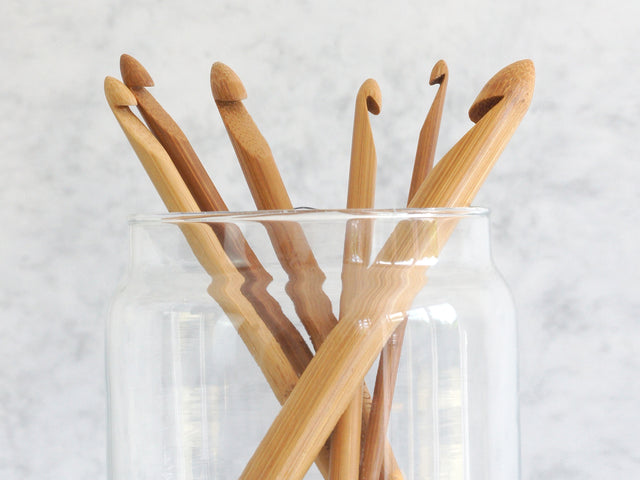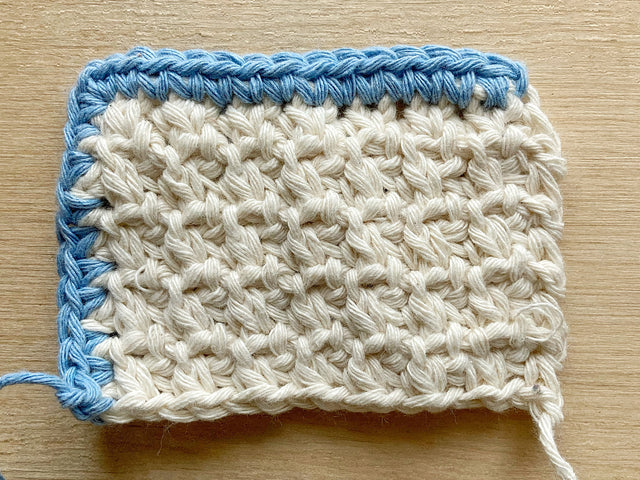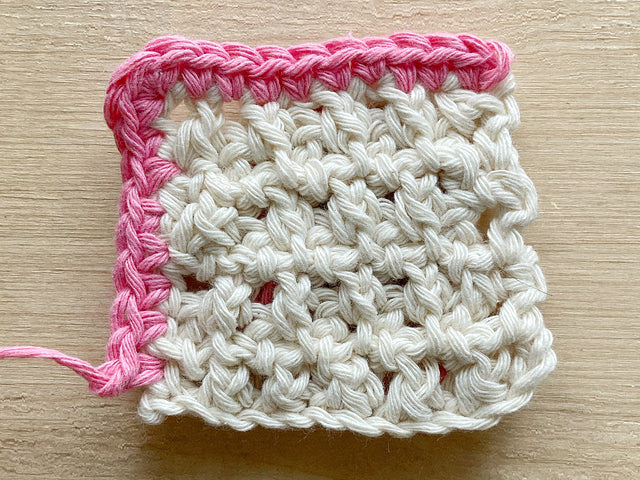
Understanding Crochet Hook Sizes & Yarn Weights
Crochet | 3 min read time
Find out more about why the yarns you choose, and the hooks you use, matter!
What does yarn weight mean?
Yarn ‘weight’ refers to the thickness of the yarn strand. The four most popular yarn weights are DK (which stands for double knit), aran/worsted weight, chunky/bulky, and super chunky/super bulky.
What are crochet hook sizes?
Hook sizes are generally given in mm (eg. 4mm) which refers to the thickness of the hook. The higher the number, the thicker the crochet hook, so a 10mm hook is thicker than a 7mm hook. If your pattern asks for a certain hook size using a letter, you can check which mm this converts to using our hook size conversion guide.

|
| Shop now - Crochet hooks |
Each yarn will have a recommended crochet hook size to be used with it, depending on the yarn weight. The thicker the yarn, the larger the hook size you will need to use with it. For example most DK yarns recommend a 4mm hook, whereas chunky yarns use a 6-7mm hook. On the yarn band of every yarn it will give you the recommended hook size for that specific yarn – remember to check this as not all yarns of the same weight will have the same recommended hook size.

Although yarn manufacturers give you a recommended hook size for every yarn, this isn’t set in stone. Using a larger hook size than suggested will give you looser, more open stitches, as well as making your finished crochet piece larger. Using a smaller hook size will give you tighter, denser stitches, and your finished piece will end up being smaller. Here you can see the same yarn has been crocheted with three different hook sizes, giving three very different end results.

 |
|
There are times when you will intentionally use a smaller or larger hook size than what is recommended, such as;
- When you need to match tension for a swatch. Some patterns will ask you to crochet a sample swatch to ensure your tension matches that of the pattern author eg. 20 stitches and 15 rows should measure 10x10cm. If your swatch ends up larger than this you would go down a hook size, and if it is smaller you would go up a hook size to allow you to match their tension.
- Trying to create a specific effect with your crochet. For example I crocheted a scarf and wanted a very loose, open fabric, so I used a hook that was three sizes larger than was recommended for the yarn.
- Using a crochet technique that typically requires a different hook size. When making amigurumi toys it’s common practice to go down a hook size or two to create a really tight fabric so that no stuffing can escape, and to give a neat finish to your toy.
How to substitute yarns
Crochet patterns will usually list a specific yarn brand to use, but there may be times when you wish to substitute yarn. Usually you will substitute like for like - so if a pattern calls for a DK yarn you will substitute for another DK weight yarn. However, occasionally you may wish to use a different weight yarn than what the pattern suggests. When changing yarn weight it’s important to note that;
- When you change your yarn weight, you will also need to change hook size to one that works with your new yarn.
- Using a different yarn weight and hook size will affect the size of your finished piece. A thicker yarn and larger hook will mean the finished item will be larger, and a thinner yarn and smaller hook will mean it is smaller. This can work well for projects like blankets or toys, where you can create smaller or larger versions without having to change the pattern. But for clothing items it can be more tricky as you may need to adjust the pattern to ensure you get a good fit.
- Changing yarn weight may also affect the functionality of your finished item. For example crocheting a blanket in a super chunky yarn instead of a DK yarn will mean the blanket will be much heavier and thicker, which may not be the effect you’re looking for.
When substituting, it’s also important to check that you have enough metres or yards of the new yarn for your project, as different brands and weights of yarn will have varying lengths per ball or skein.

Remember – if you’re unsure about a yarn weight or what hook size will work best, always crochet a sample swatch. It is the best way to see how a particular yarn and hook will work together, and what the resulting stitches will look like.
What crochet creation are you working on at the moment? Share your photos with a community of crafters on Instagram and Facebook.

